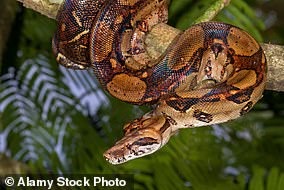‘Virgin’ boa constrictor gives birth to 14 babies at Portsmouth school after getting pregnant – without having sex with a man
British students were given a very unusual biology lesson after their 13-year-old snake ‘Ronaldo’ suddenly gave birth – without having sex.
Experts from City of Portsmouth College are confident the 14 young of the 6ft Brazilian rainbow boa are the result of a rare ‘virgin birth’.
In a process called parthenogenesis, some species can reproduce without needing a partner of the opposite sex.
Pete Quinlan, a zookeeper at the university, believes this is only the third such incident in captivity of a Brazilian rainbow boa anywhere in the world.
Although the snake is female, Mr Quinlan and his team thought it was male, hence the name Ronaldo, after the famous footballer.
Students at City Portman College were surprised to discover that their male snake, Ronaldo (pictured), had unexpectedly given birth
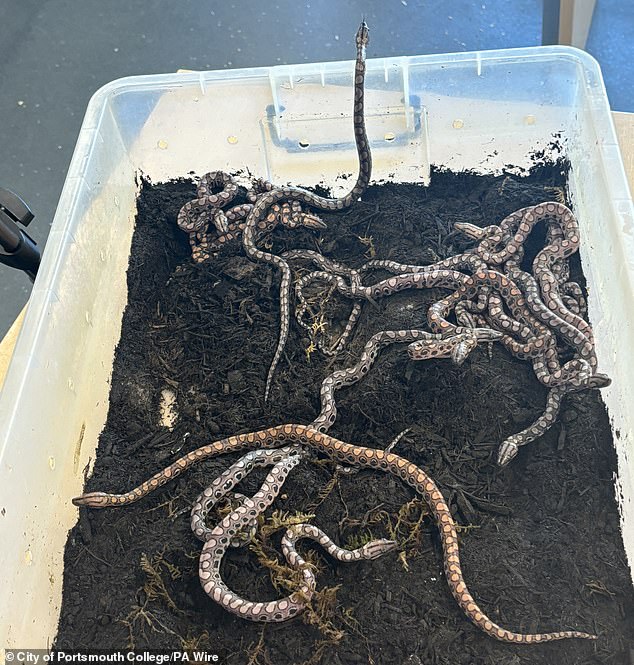
As if by magic, the baby snakes (pictured) appeared in Renaldo’s enclosure and were discovered by a student
Mr Quinlan has been caring for Ronaldo for nine years, since the snake was rescued by the RSPCA.
Ronaldo has been living at Portsmouth College for two years and according to Mr Quinlan the snake has never had the chance to mate.
He said: ‘Ronaldo looked a little bit bigger than usual, as if he had eaten a big meal, but we never thought for a moment that he, or should we say she, was pregnant.
‘I’ve been breeding snakes for 50 years, but I’ve never seen anything like this before.’
A student soon discovered 14 baby snakes in the enclosure.
Zookeeper Amanda McLeod said: ‘One of the students discovered them during a routine check of the terrarium.
‘At first we thought she had made a mistake. We couldn’t believe our eyes!’
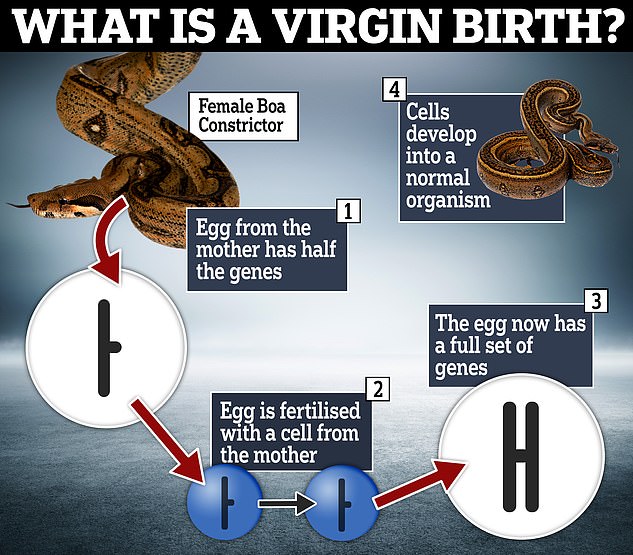
Virgin birth is possible in snakes through a process called parthenogenesis, in which the female reproduces using her own genetic material
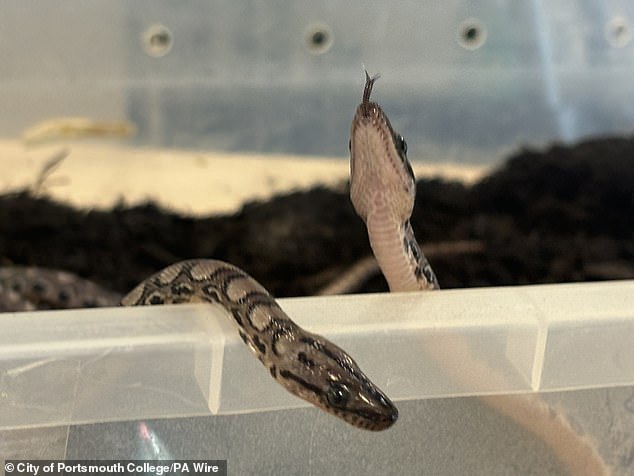
Despite not being held with another snake for nine years, Ronaldo gave birth to 14 baby snakes. Some of the 14 babies are pictured.
Although this may seem miraculous, it is in fact a completely natural, albeit rare, process.
As in the famous case of Charlotte the Stingray (now deceased), some animals can reproduce without the need for a male.
During sexual reproduction, the genetic material of the male and female are combined to produce offspring.
But during a process called parthenogenesis, only the mother’s genetic material is used, eliminating the need for a male partner.
It is not entirely clear what causes certain species to undergo this process, or what connects the species that have this ability.
Recently, Charlotte, the stingray at the North Carolina Aquarium, attracted international attention after reports of a virgin birth emerged.
However, some scientists disputed the claims of Charlotte’s asexual reproduction, pointing instead to a rare reproductive disease that led to her death.
However, some animals, such as snakes and crocodiles, are able to fertilize their own eggs, meaning that the offspring receive 100 percent of their DNA from the female.
Katherine Mitchell, a spokeswoman for the British Herpetological Society, explains: ‘The resulting young are effectively clones of their mother.’
But because their genes are expressed in different ways, Ronaldo’s babies still show slight variations in their markings.
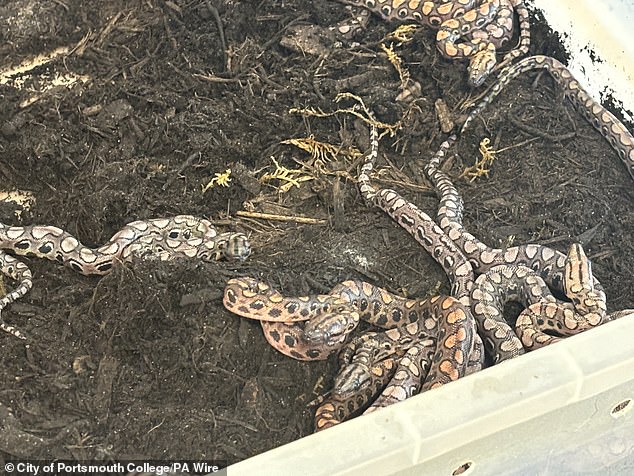
It is believed that Ronaldo reproduced asexually through a process called parthenogenesis
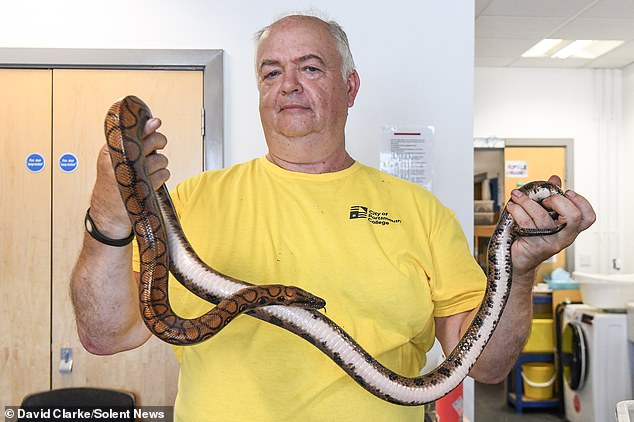
Ronaldo’s handler, Mr Quinlan (pictured), says he has never seen anything like it in his 50 years as a snake handler.
Ms Mitchell told MailOnline that such an event was ‘very rare’, adding: ‘Boa constrictors are not among the reptile species in which parthenogenesis is common.’
As for Ronaldo’s case of gender-swapped sex, Ms Mitchell, herself a boa constrictor keeper, points out that some snakes have few external signs of their sex.
She says: ‘In some snake species there are clear visual differences, for example in size or colour.
‘In species where there is little visible external difference, a veterinarian or experienced keeper can use a metal probe to locate the cloaca, where the reproductive organs are located, to determine sex.’
This means that it is not that uncommon for a snake’s sex to be misidentified.
Ronaldo’s 14 babies are being cared for at the university by Mr Quinlan, where they will remain until they are old enough to find new homes.
Although the non-venomous boa constrictor is native to South America, it is often kept and bred in captivity and is also kept as a pet in other parts of the world, including the United Kingdom.
Exotic Pets UK describes the boa constrictor on its website: ‘This species makes a great exotic pet, but as an adult it will require a large enclosure.’
Boa constrictors can bite to defend themselves. Although they are generally not dangerous to humans, large adults can eat cats and dogs.

